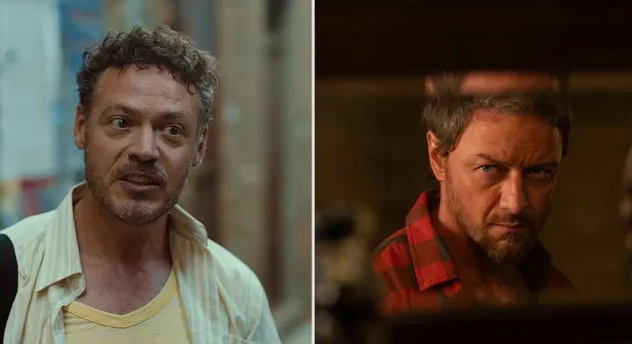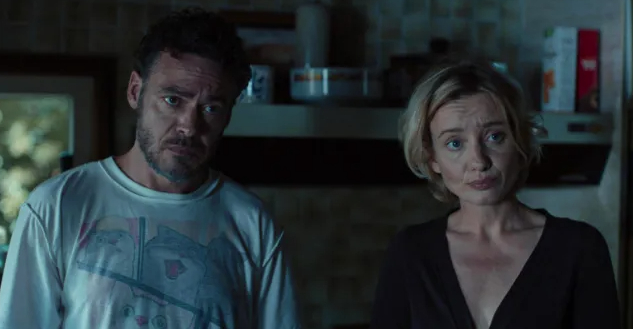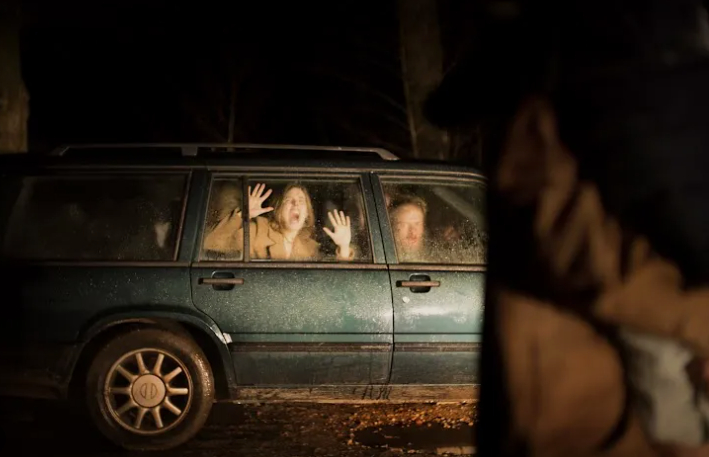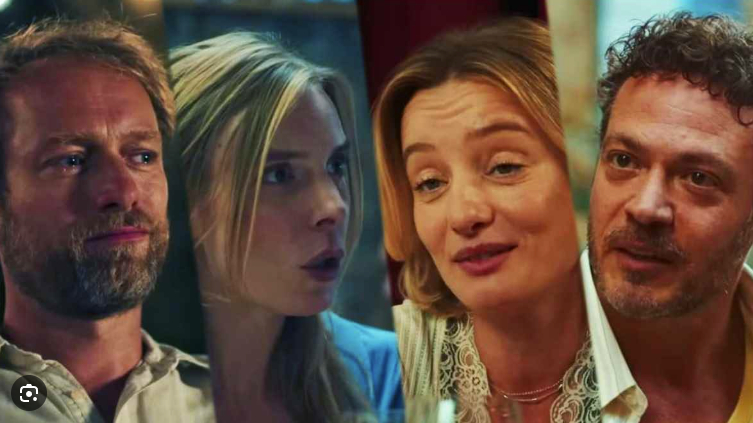Speak No Evil (2022)
Speak No Evil (2022) is a chilling psychological horror that transforms the ordinary discomforts of social interaction into a harrowing descent into terror. Directed by Christian Tafdrup, this Danish thriller is a slow-burning nightmare that explores the terrifying consequences of politeness, conformity, and repressed instincts. It’s a brutal, emotionally devastating story about how silence and civility can cost everything.
Plot Overview
The story centers on Bjørn, a mild-mannered Danish man, his wife Louise, and their young daughter Agnes. While vacationing in Tuscany, the family meets a friendly Dutch couple—Patrick, Karin—and their mute son Abel. The families form an instant bond, and after returning home, Bjørn and Louise receive a spontaneous invitation to visit their new friends at their countryside home in the Netherlands.
Eager to reconnect and break free from their mundane routine, the Danes accept the invitation. But from the moment they arrive, subtle red flags begin to emerge. Patrick’s jokes border on offensive, Karin behaves oddly toward Agnes, and Abel is treated with cold indifference. The atmosphere grows increasingly uncomfortable, yet Bjørn and Louise suppress their doubts, unwilling to appear rude or ungrateful.
As the weekend unfolds, the friendly façade begins to crumble. Tensions rise, the behavior of their hosts becomes more disturbing, and the Danish family finds themselves emotionally cornered. Trapped by their own passivity and refusal to speak out, they become entangled in a chilling game with horrifying consequences. What began as a harmless visit turns into a psychological prison—and eventually, something far worse.
Themes and Emotional Depth
Speak No Evil is a masterclass in restraint. It eschews typical horror theatrics in favor of emotional and psychological terror, drawing tension from awkward silences, subtle power plays, and the paralyzing fear of confrontation.
The film’s central theme is the danger of excessive politeness. It critiques the societal impulse to avoid discomfort—even in the face of escalating threats. Bjørn and Louise represent the modern, civilized individuals who prioritize manners over instinct, even when their safety is at risk. Their slow realization that something is deeply wrong is agonizing to watch, not because they don’t see it, but because they’re too afraid to act on it.

Other themes explored include denial, fear of social embarrassment, parental responsibility, and the loss of agency. The terror here doesn’t rely on monsters or ghosts—it lies in the deeply human fear of being impolite, of overreacting, of breaking the illusion of peace.
Ultimately, the film poses a terrifying question: how far will you go to keep the peace?
Character Development and Performance
Morten Burian as Bjørn: Burian delivers a painfully subtle performance. As the passive and introspective Bjørn, he embodies the moral dilemma at the heart of the film. His polite smiles and hesitant objections make his character relatable, yet maddening. His transformation—from repressed observer to silent witness to horror—is both tragic and chilling.
Sidsel Siem Koch as Louise: Koch’s portrayal of Louise is equally haunting. Her maternal instincts clash with her social conditioning, and her discomfort is visible in every scene. She is the emotional anchor of the film, and her slow unraveling mirrors the audience’s growing dread.

Fedja van Huêt and Karina Smulders as Patrick and Karin: The antagonists are terrifying precisely because they never break character. They’re not over-the-top villains—they’re quiet, controlled, and calculated. Patrick’s passive-aggressive dominance and Karin’s cold detachment create a suffocating environment where manipulation replaces violence—until it doesn’t.
Liva Forsberg as Agnes and Marius Damslev as Abel offer haunting performances as the children caught in the psychological crossfire. Agnes’s innocence makes the film’s climax all the more devastating, while Abel’s silence is a persistent, ghostly presence that foreshadows something deeply wrong.
Cinematography and Direction
Christian Tafdrup’s direction is deliberate and unnervingly patient. Wide, still shots and long silences build an atmosphere of unease. The film’s aesthetic is deceptively beautiful—lush countryside, warmly lit interiors, cozy dinner tables—all masking a growing sense of dread. The dissonance between appearance and reality is one of the film’s most disturbing elements.

The cinematography focuses on discomfort: tight frames during tense conversations, lingering shots after awkward moments, and empty spaces that seem to breathe with tension. The sound design amplifies the unease with subtle ambient noise, stark silences, and a haunting score that only creeps in when absolutely necessary.
The pacing is slow but never dull. It mirrors the characters’ own progression from comfort to horror, allowing the tension to stretch until it becomes unbearable. When the violence finally arrives, it is swift, merciless, and shocking—precisely because the film has withheld it for so long.
Final Verdict
Speak No Evil (2022) is an emotionally brutal and psychologically devastating film that weaponizes social norms and passive behavior. It challenges viewers to examine how far they would go to avoid awkwardness, how easily politeness can be manipulated, and how dangerous it is to ignore your instincts.

It’s not just a horror film—it’s a social nightmare. Its terror lies in what we all recognize: the moments we bite our tongues, excuse bad behavior, or second-guess our own discomfort.
With outstanding performances, meticulous direction, and one of the most disturbing endings in recent memory, Speak No Evil is a bold and unforgettable experience.
Rating: 9/10
An intensely uncomfortable and intelligent psychological horror. If you’re drawn to films that disturb not with gore, but with moral horror and emotional dread, Speak No Evil will stay with you long after it ends.
